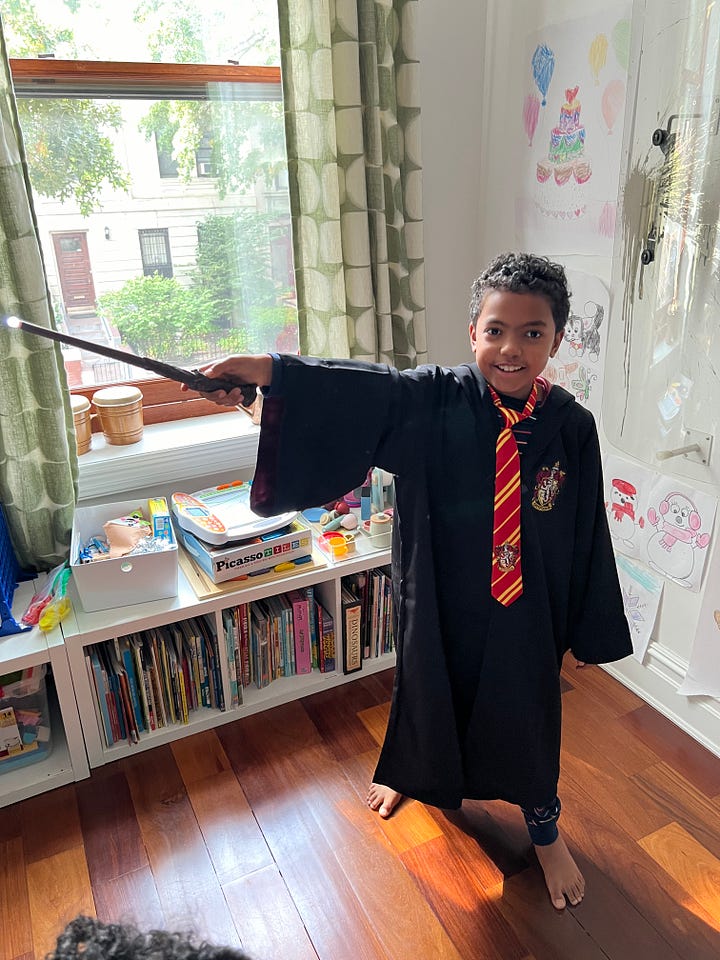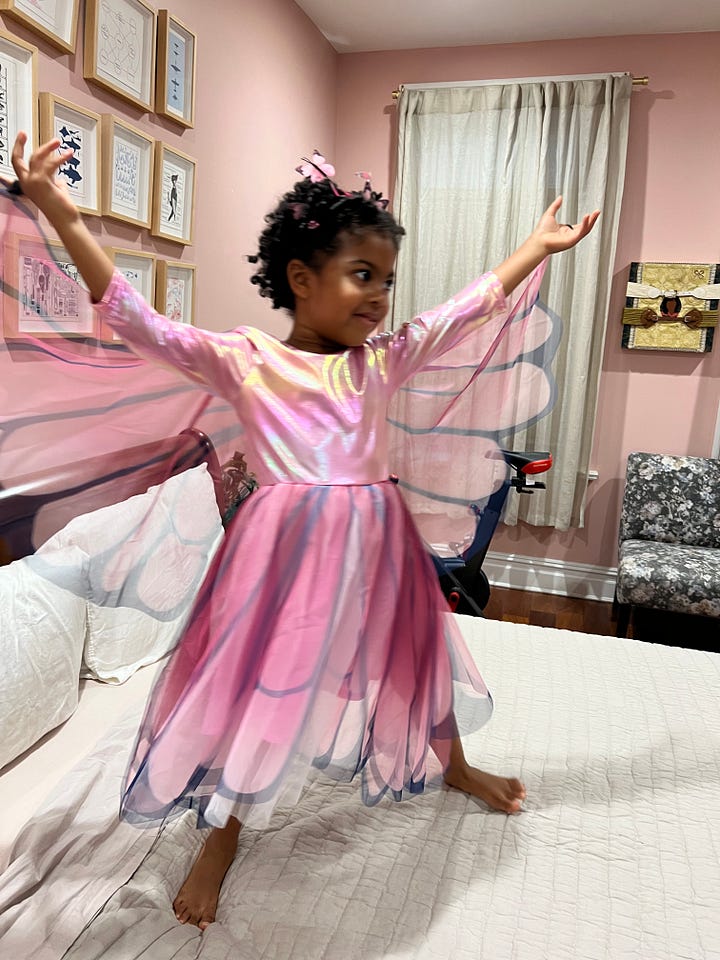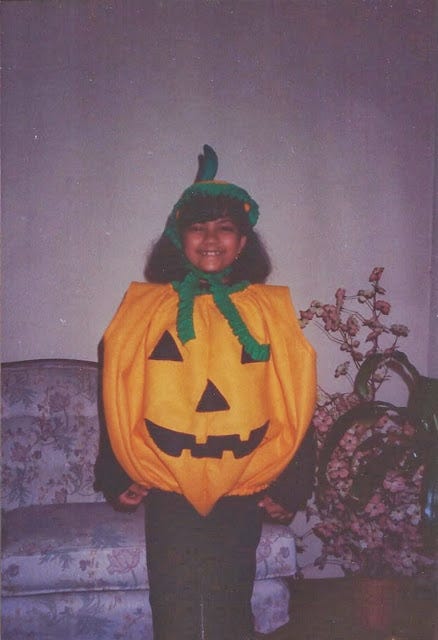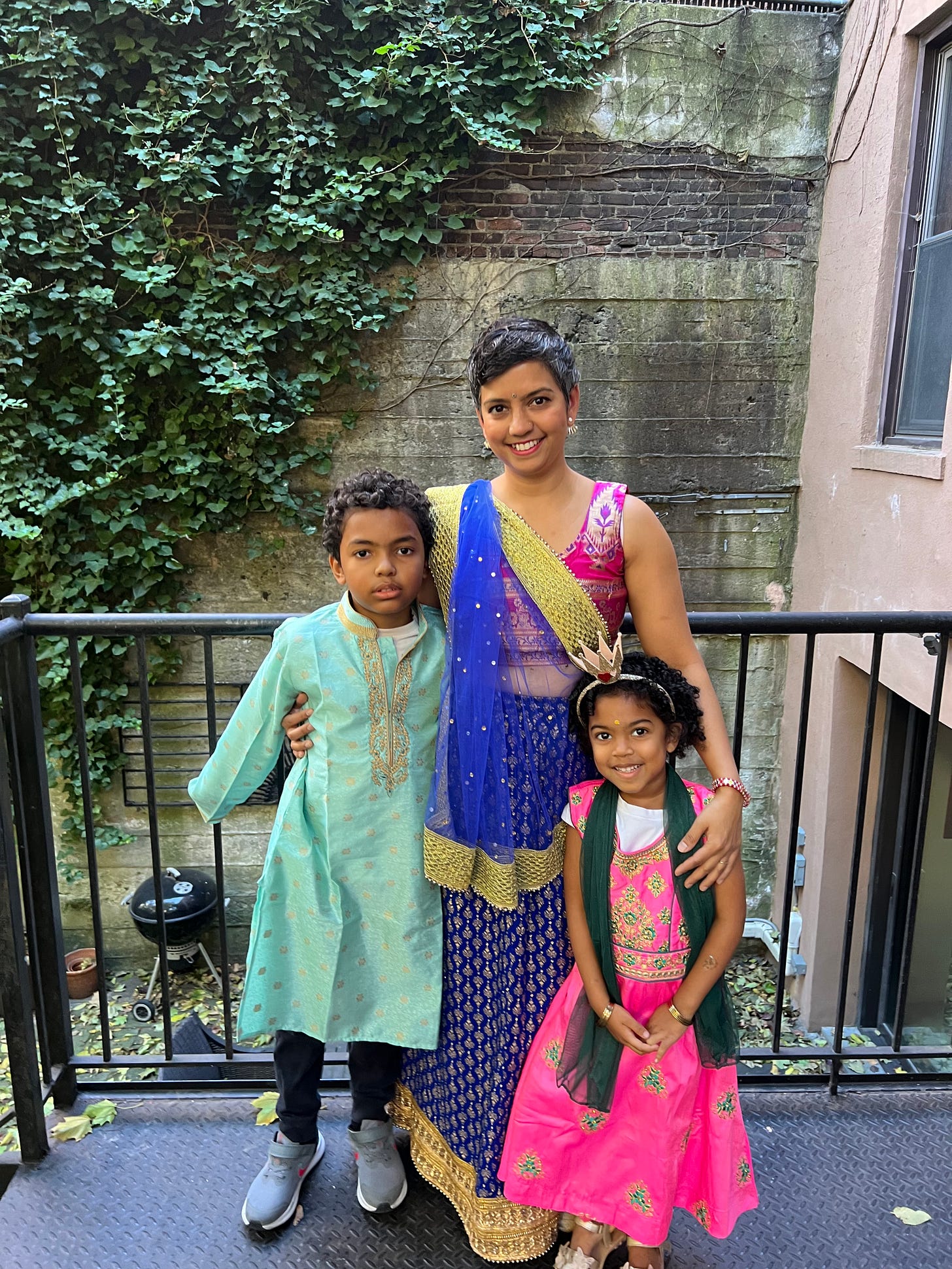This year, Diwali, the Indian festival of lights, begins on the same day as Halloween, a cosmic coincidence that has inspired a host of ridiculous internet memes. From witches in black saris to spider jalebis (a type of Indian sweets made creepy), South Asians are delighting in the absurdity of two wildly disparate traditions colliding in real time. For me, the overlap brings to light how living in the diaspora can feel like a parody of belonging.
Growing up, I was never as excited about Halloween as my American friends. I think this was because costumes were already a defining part of my life. During the week, I wore clothes from the sale rack at TJ Maxx. On weekends, I donned colorful lehengas and saris for family weddings, embroidered salwar kameez for dance practice, and elaborate silk Bharatanatyam costumes for performances. My school friends only got to dress up and shape shift into different characters once a year. For me, life was defined by extreme wardrobe changes, my sartorial pendulum swinging from one continent to another.
What I remember most about Diwali from my childhood was performing an Indian classical dance with diyas, the lights for which the celebration is named. Onstage, my friends and I held battery-operated versions in our palms, the tiny white lights swirling in unison as we moved.
At home, my family performed a hawan (fire ceremony) in our living room and sang bhajans (religious songs). Afterward, my mother brought out the traditional clay lamps from the back of her closet, soaking cotton balls in ghee, then lighting them. We went around the house placing the diyas at the front door and back deck. Even in the suburbs of New Jersey, the ritual brought with it a certain magic.
Diwali comes from the Sanskrit word deepavali, meaning “row of lights.” The diyas symbolize the triumph of light over spiritual darkness. In the Hindu epic, the Ramayana, Lord Rama returned to Ayodhya after fourteen years of exile guided by rows of lights throughout the city. Diwali also honors Lakshmi, the goddess of wealth, who follows the lights and lamps into people’s homes to bestow prosperity and good fortune.
At my son’s school, I sat with him in front of his fourth grade class to share my research about Diwali. Before I began, I explained how my forefathers had left India in the early nineteenth century to work as indentured laborers in the sugar plantations of Guyana. We talked about British colonization, and cultural displacement. I taught them the word, “diaspora,” describing how there were communities of Indians all over the world. It felt important to acknowledge that despite the passage of time and distance, Diwali was a tradition my family and I continued to celebrate in our own way.
Afterwards, we passed out vegan, gluten/soy/nut-free Coconut Ladoos we prepared the night before, no trick-or-treat required.
Like my mother did for me and my sisters, I tried to give my kids both cultures. They got Halloween costumes and new outfits for Diwali. Over the course of this week, my son will be Harry Potter and my daughter will be a pink butterfly. At other events, they will wear the Indian outfits I bought on my lunch break, power shopping at Vintage India with the help of an obliging sales clerk.


Miles wore his new aqua and gold kurta for our class presentation. He wanted to wear it for the rest of the school day, but I was worried he would get ketchup or paint on the silk brocade fabric. Reluctantly, he pulled the kurta over his head, leaving him in a plain gray t-shirt. “Now I’m just regular old me,” he sighed.
I realized that though he hadn’t grown up with as much Indian or Guyanese culture as I had, he still felt the power of the costume. Like I had experienced growing up, Miles was learning how Indian textiles made him feel. The lush material was like connective tissue collapsing boundaries of space and time, tethering us to the Indian subcontinent by a few delicate threads. I was grateful to see that he wasn’t embarrassed to wear his kurta in front of his friends; he was proud of his heritage. Halloween was fun and sugar-filled, but Diwali re-kindled his inner light.
Events
Next month, on Tuesday, November 19 at 7pm ET, I’ll be taking the stage at Joe’s Pub at Generation Women, a monthly multi-generational feminist storytelling night. Come support me, and five other talented performers for an evening of holiday-themed stories!
Tickets linked HERE.
Happy Halloween! Happy Diwali!
As always, thank you for reading!








Loved this so much. Happy Diwali!🪔